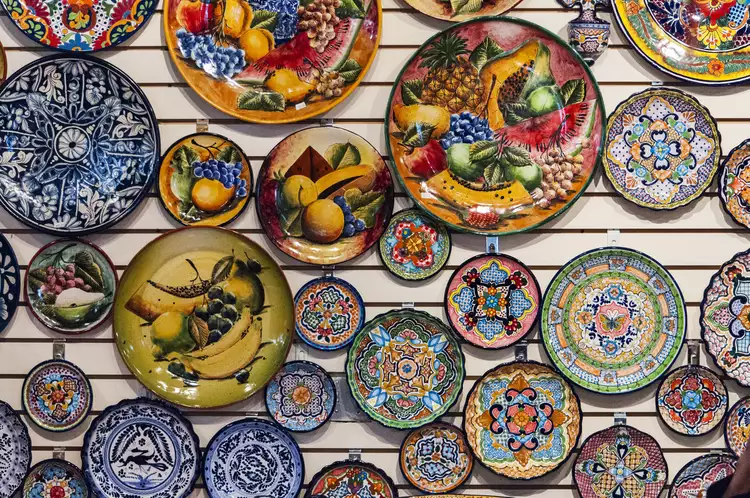Explore Talavera Pottery in Puebla
If you’re planning a trip to Puebla, be sure to leave some room in your carry-on for some Talavera pottery. You’ll definitely want to bring some home with you! Talavera Poblana is a world-renowned hand-painted pottery that comes in various forms, including both functional and decorative items such as plates, serving dishes, vases, and tiles. Puebla is sometimes referred to as “The City of Tiles” because of the Talavera tiles used on the buildings. This Mexican craft is a tin-enameled earthenware (Majolica) made in the state of Puebla. Moreover, besides purchasing it, you can also have the opportunity to see how it’s made, which is indeed one of the top things to do during your visit to Puebla.
Pottery in Puebla:
The native people of Mexico have a long tradition of making pottery. With the arrival of the Spaniards, contact between these two traditions resulted in exquisite new styles. The Spaniards introduced the wheel and tin-based glaze, while the native Mexicans contributed skilled labor and ingenuity. Consequently, it is believed that the particular techniques for making this type of Majolica pottery were introduced in Puebla by immigrants from Talavera de la Reina, Spain.
In 1653, a potter’s guild was formed, and ordinances were established to regulate the production of Talavera. Between 1650 and 1750, the production of Talavera was at its height. Originally, Talavera featured white and blue designs, but by the 18th Century, new colors were introduced, including green, orange, and yellow.
How Talavera is Made:
The basic process for making Talavera has remained the same since the 16th Century; however, there have been changes in the shapes of pottery made and the style of decoration. Talavera pottery is made with two kinds of clay: a dark clay and a light, slightly rose-colored clay. Both of these clays are sourced from the state of Puebla.
These clays are mixed together, strained, and kneaded. Each item is modeled by hand, turned on the wheel, or pressed in a mold. The pieces are then left to dry for a period of 50 to 90 days, depending on their size. Once dry, the pieces undergo a first firing and are hand-dipped in a glaze that will form the white background for the design. Stencil designs are dusted onto the pieces using charcoal powder, after which each piece is hand-painted and fired again at a higher temperature.

Talavera Authenticity:
Authentic Talavera can be distinguished from imitations by its raised design and the high gloss of the surface finish. In 1998, the Mexican Government established the Mexican Talavera Regulatory Council (Consejo Regulador de Talavera), which regulates the craft’s production and limits the use of the term to pieces created within the designated region of Puebla, including the districts of Puebla, Cholula, Tecali, and Atlixco. There are fewer than 20 workshops producing authentic Talavera. To be certified, these workshops must pass an inspection and verification process every six months.
See Talavera Being Made:
You can purchase Talavera in many locations throughout Mexico and internationally; however, one of the few places where you can witness its creation is in Puebla. Various workshops offer tours, including Uriarte Internacional, located in Puebla’s historical center at 4 Poniente 911, (222) 232-1598. Workshop tours operate from Monday to Friday, 9 a.m. to 5 p.m. Alternatively, you can visit Talavera de la Reina, located in San Andrés Cholula, on the way between Puebla and Cholula.

Purchase Talavera:
- Uriarte Internacional has a showroom in Puebla at the address mentioned above and a store in Mexico City in the upscale Polanco area, located at Alejandro Dumas 77.
- Fonart is a chain of stores operated by the Mexican government to promote the sale of folk art and crafts and carries high-quality pieces. In Mexico City, visit their location at Juarez 89, Centro Historico. 5521-0171, along with several other locations throughout Mexico.
Buying Tips:
Authentic Talavera can be pricey since every piece is unique and of excellent quality. While there are imitations, only a select few workshops are authorized to create official Talavera and maintain traditional methods throughout generations. While traveling through Puebla and neighboring states in central Mexico, you may encounter more affordable versions resembling the same craftsmanship. Original Talavera will have the workshop’s name signed at the base of the piece and will come with a DO4 certification number.





